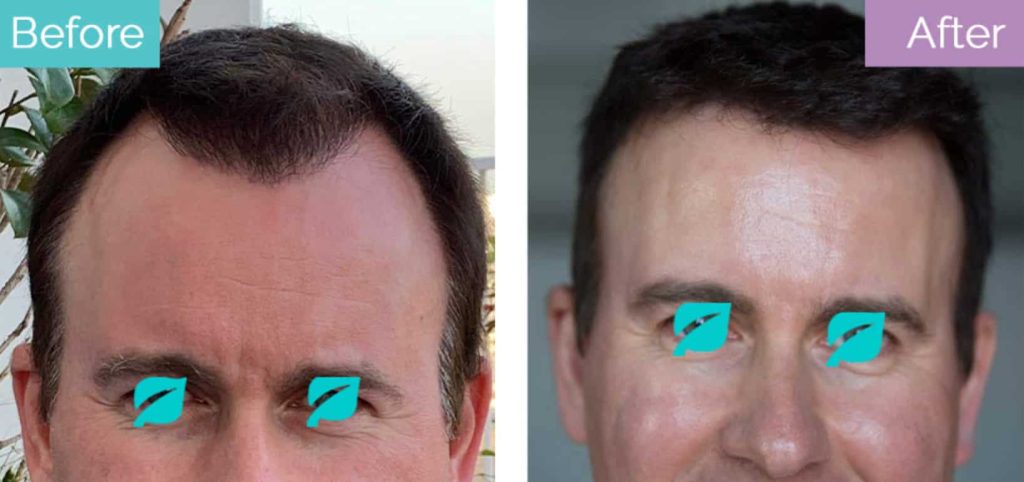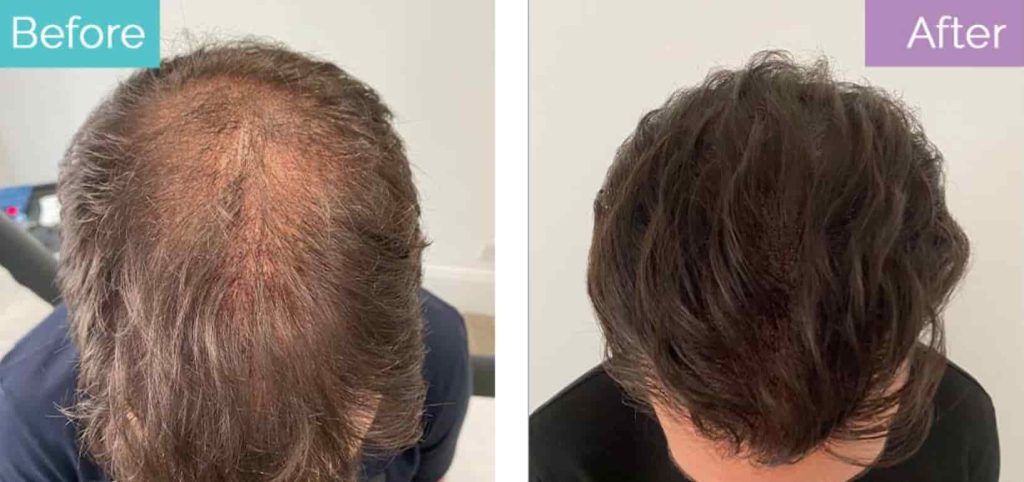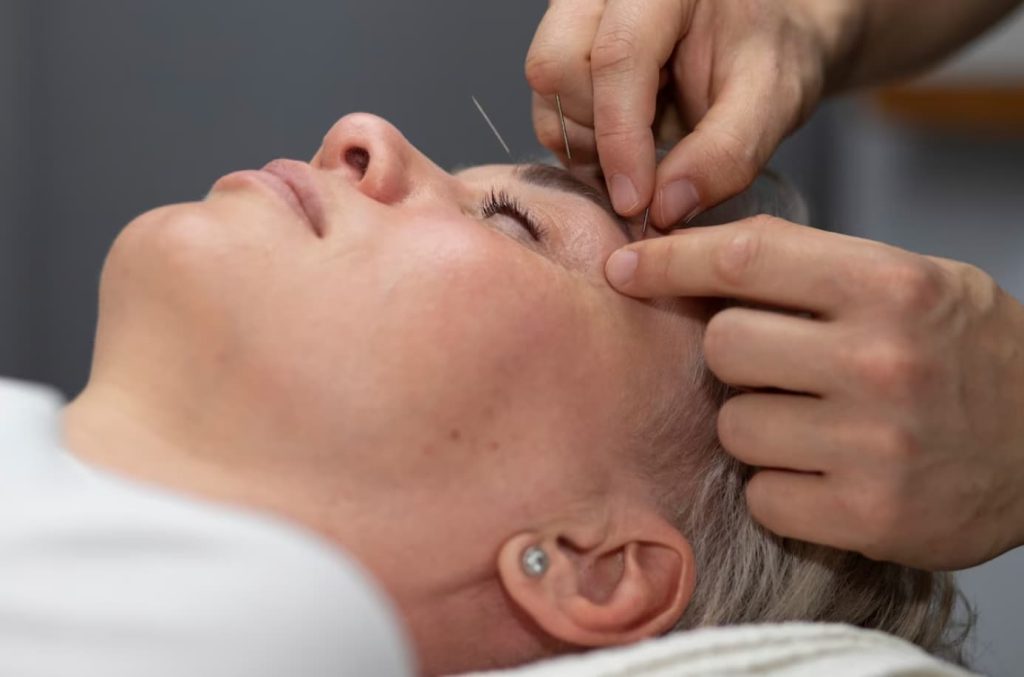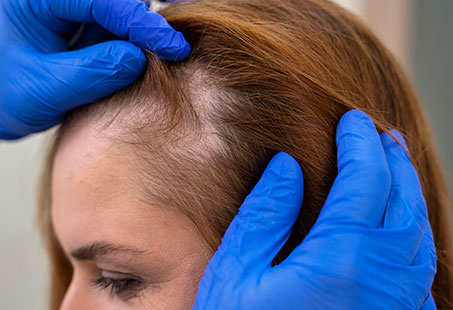Looking for a Turkey hair loss treatment isn’t exactly easy. There are countless options out there, and you’re not likely to know which “cure” will actually work for you.
Keep in mind that for a hair loss treatment to be effective, it needs to address the underlying problem. Otherwise, it simply won’t work, no matter how much money you’ve spent on it.
Here, we’ve compiled a list of all the hair loss treatments that might work for you, depending on the root cause of your hair loss.
Injectables
There are more than a few options to consider when it comes to non-surgical solutions for hair loss. These are as follows:
Mesotherapy
Hair mesotherapy has been used as a treatment for telogen effluvium, androgenetic alopecia, and alopecia areata for quite some time now.
It involves injecting a mix of ingredients into the scalp to stimulate hair growth. While there’s no standard formula, it usually contains:
- Minoxidil
- Finasteride
- Dutasteride
- Vitamins
- Minerals
- Azelaic acid
- Tretinoin
- Amino acids
It’s not exactly understood how it works, but some studies show that it may help with hair loss. Still, it lacks sufficient, conclusive evidence of its efficacy.
Besides, this treatment also carries a risk of serious side effects, one of which is cicatricial or scarring alopecia.
Platelet-Rich Plasma
Platelet-rich plasma, also known as PRP, is one of the most popular injectables for treating hair loss. It’s rich in growth factors, plasma proteins, and cytokines.

When injected, this PRP enhances the proliferation of dermal papilla cells; these cells play an important role in hair growth. Its anti-inflammatory properties also make it suitable for alopecia areata.
This treatment is often recommended to patients undergoing hair transplants so that they can have better hair growth and density.
Although keep in mind that while it can help, it might not give dramatic results in case of permanent hair loss.
It’s, however, considered safe with a low risk of any serious side effects (because the patient’s own blood is used).
Stem Cell Therapy
Stem cells are also being used for the treatment of hair loss. In this, stem cells are taken from the body, grown in a lab and then injected back into the scalp.
The idea is that those stem cells will form hair follicles. And while it does sound promising, it hasn’t become as mainstream.
For one, growing stem cells in a lab is not easy. Secondly, it requires more research into its safety and effectiveness.
Steroid Injections
For decades, steroid injections have been used to treat alopecia areata.
Alopecia areata is an autoimmune disease, so immunosuppression by corticosteroids helps with hair growth.
A study published in the British Journal of Dermatology showed that 97% of patients with alopecia areata were able to regrow their hair after receiving steroid injections.
However, one of the main side effects of this treatment is atrophy. But that may be avoided by controlling the volume, frequency and depth of the injections.
Medication
Although there are just two FDA-approved hair loss drugs (minoxidil and finasteride), there are many other off-label medications being prescribed. Let’s take a closer look at them.
Minoxidil
Minoxidil, sold under the name Rogaine, is a hair loss medication that’s applied topically to promote hair growth.
It’s actually a vasodilator that works by increasing the blood flow to the scalp. However, it’s also believed to increase the duration of the anagen (growing) phase of the hair growth cycle.
You have to keep taking the drug to maintain results. Meanwhile, it can cause some side effects, such as itchiness or a rash.
Finasteride
Mainly used for androgenetic alopecia, finasteride (brand name Propecia) is the other FDA-approved drug for hair loss.
Essentially, it works by stopping the production of dihydrotestosterone, the hormone that causes genetic hair loss.
One of the main problems that many people have with this drug is that it can cause sexual dysfunction. However, these side effects do go away after you discontinue the medication.
Dutasteride
Dutasteride is also an antiandrogen like finasteride and works the same way: stops the 5-alpha reductase enzyme from converting testosterone into dihydrotestosterone.
This drug is, however, stronger than finasteride since it has the ability to stop the action of different types of 5-alpha reductase enzymes.
But just like finasteride, it also causes sexual problems like lower sex drive, erectile dysfunction and impotence.
Spironolactone
Spironolactone, also known as Aldactone, is used for the treatment of hair loss due to androgenetic alopecia and polycystic ovary syndrome (PCOS) in women.
It works by slowing the production of androgens, and it will be a few months before you see any results from it.
This drug can also have some negative side effects on the body, so make sure to discuss its pros and cons with your healthcare provider.
Immunosuppressants
Immunosuppressants like cyclosporine, azathioprine, and methotrexate are also used for the treatment of hair loss caused by alopecia areata.
While these drugs can help increase hair growth, they can have serious side effects. For instance, they can:
- Increase the risk of infection
- Cause nausea and vomiting
- Diabetes
- High blood pressure
- Tremors
Your doctor must therefore determine that the benefits of the drug outweigh its disadvantages before prescribing it.
Sensitising Agents
Chemical sensitisers trigger an immune response, which in turn opposes cells that cause hair loss. For instance, diphenylcyclopropenone (DPCP) is a sensitising agent that’s used for the treatment of severe alopecia areata and alopecia totalis (complete loss of hair on the scalp).
According to a study published in the International Journal of Trichology, DPCP has a response rate of 60% in patients suffering from severe alopecia areata. However, it’s only 17% in those who have alopecia totalis or universalis (full body hair loss).
These chemicals can also cause some side effects, such as itchiness, dry skin, blisters, eczema, hives, and chemical leukoderma.
Prostaglandin Analog
Prostaglandin analogues are commonly used to treat glaucoma. Interestingly, these drugs also promoted the growth of eyelashes.
Latisse, whose active ingredient is prostaglandin, is an FDA-approved drug that is used for the thickening and growth of eyelash hair if you’ve lost it.
Research is now being conducted using prostaglandin analogues for the treatment of alopecias, such as androgenetic alopecia and alopecia areata.
Steroids
Other than injectables, topical steroids are also used for the treatment of hair loss caused by:
- Lupus
- Cicatricial alopecia
- Alopecia areata
These suppress the immune system and also have an anti-inflammatory effect, which helps the hair follicles.
Birth Control Pills
While some oral contraceptives can cause hair loss, others can actually help you with it. These are the ones that have a “low androgen index.”
They can suppress the production of androgens and keep the hair in the growing phase for a longer period of time.
Together with spironolactone, these are used for the treatment of hair loss due to polycystic ovary syndrome.
Keep in mind, however, that these pills can cause serious side effects, such as blood clots, high blood pressure, heart attack, and stroke.
Antifungals and Antibacterials
If you’re losing your hair due to a fungal infection, an antifungal can help in its treatment.
For instance, the medication Griseofulvin is used for the treatment of tinea capitis (scalp ringworm). Once the infection is gone, your hair might grow back again.
The same goes for antibiotics for bacterial infections.
Surgery
Surgical hair loss treatments can be the most effective for permanent alopecia.
In this, an FUE hair transplant is the most popular, especially for androgenetic alopecia.

However, some other surgical treatments are also available, such as:
- Scalp reduction
- Tissue expansion
- Flap surgery
Scarring alopecia is more commonly treated with these.
Alternative Treatments & Therapies
Listed below are some alternative treatments and therapies for hair loss.
Scalp Micropigmentation
Also known as a scalp tattoo, scalp micropigmentation is another hair loss treatment. It doesn’t “treat” hair loss in any way. However, it can help you hide it if no other treatment is working out for you.

In this, a permanent pigment is deposited into the scalp – mimicking the appearance of a hair follicle. If you have no hair, it will look like a buzzcut. However, it can also help you fill out some bald patches on the scalp for a denser appearance.
Supplements
Supplements are marketed as the all-time hair loss treatments. The most popular of them are those containing:
- Vitamins (biotin, vitamin D, C, multivitamins, nutrafol)
- Proteins and amino acids (viviscal)
- Minerals (zinc, iron)
- Plant extracts (saw palmetto, turmeric, garlic, ginseng)
The truth is these supplements only help if you have a nutritional deficiency. Otherwise, they aren’t really going to treat your hair loss.
Laser Therapy
Laser phototherapy devices also have FDA approval for hair loss. By absorbing laser photons, hair follicles are believed to be strengthened. That, in turn, helps with hair growth.
While some studies show promising results, the truth is it doesn’t really work for everyone. And the devices are quite expensive.
If you’re considering trying this out, make sure to talk to a professional doctor.
Microneedling
While microneedling is more popular for treating acne scars, it’s also used for hair loss.
A roller device creates puncture holes in the skin of the scalp. This not only promotes collagen production but also stimulates blood flow to the scalp.
According to a study published in the International Journal of Trichology, microneedling also stimulates the stem cells and growth factors, which can help with hair loss.
Acupuncture
One of the less conventional treatments for hair loss is acupuncture. It’s believed to help by increasing blood flow. However, the research on it is still in its infancy.

Some research reports that it can help with hair loss due to alopecia areata. But it would be better to consult a doctor before starting it as a first-line therapy.
It’s also important to note that, despite its cheap price, acupuncture can have serious side effects if performed incorrectly.
Hypnotherapy
Considered a mind-body medicine, hypnotherapy can help a person change their thinking patterns.
While it’s not a hair loss treatment in the traditional sense, it may help with hair loss due to trichotillomania, hair pulling disorder.
Research has also been conducted on its use to treat alopecia areata, however, the results are inconsistent.
Aromatherapy
Using essential oils (rosemary, thyme, cedarwood, sandalwood, etc.) that help with growth, aromatherapy is another alternative hair loss therapy.
A study published in JAMA Dermatology also showed that aromatherapy was effective for treating hair loss due to alopecia areata.
However, again, you should only consider this after having a consultation with your doctor.
Yoga
Yoga is believed to benefit your hair by increasing blood circulation to the scalp and reducing your stress levels.
While these things may help with hair growth, there is a lack of scientific evidence on the effectiveness of yoga for hair loss.
Wigs & Fibres
Hair wigs are also a treatment option that you can consider. This is especially if you aren’t trying any other treatment or undergoing surgery.
They can be quite cheap. However, just make sure to keep them clean, as build-up can cause an infection. Also, if your wig is too tight, it might cause traction alopecia. So, be careful about that too.
Other than that, you can also consider using concealers like hair fibres to hide your bald spots. Though, they can be a bit of a hassle to deal with.
Do Hair Loss Treatments Work?
Hair loss treatments that address the root cause of the problem do actually work. Medications and surgery are often considered the most effective treatments. However, the former only provides a temporary solution while the results of the surgery are permanent.
Keep in mind that using a “hair loss shampoo” or “hair loss supplement” doesn’t guarantee that your loss will stop. You need to get a diagnosis for what’s causing your hair loss. It could be due to any of the following:
- Illness
- Injury
- Malnutrition
- Hormonal changes
- Poor lifestyle habits
- Stress
Are Hair Loss Treatments Worth It?
A hair loss treatment can certainly be considered worthwhile if it can alleviate your mental distress.
Keep in mind that no hair loss treatment is going to give you immediate results. You’ll have to wait for a few weeks to months (or even more) to notice any change.
According to the NHS, no hair loss treatment is 100% effective. However, if it helps improve your self-confidence and body image, you should consider trying it out.
Are Hair Loss Treatments Safe?
If recommended by a board-certified medical professional, hair loss treatments can be safe. However, still they might have some risks.
For instance, minoxidil is a scientifically proven, FDA-approved drug for hair loss. But it can cause serious side effects like:
- Itching
- Burning sensation
- Swelling
- Redness
- Worsened hair loss
How safe a hair loss treatment also depends on how you’re using it. For example, if you’re using too much topical corticosteroid (unknowingly or against your doctor’s guidance), you risk skin atrophy.
Also, it’s better to be wary of any new miracle drug or unconventional treatment that doesn’t have a lot of scientific backing.
No matter what, make sure to consult your doctor before you start any treatment. That’s the best way to find the safest hair loss treatment for your problem.
Conclusion
There are many different types of treatments for hair loss. Not all of them can address every cause or type of alopecia.
And there’s no guarantee that a particular treatment will work for you either (even if it was the right one).
Still, to not waste any of your resources on finding the right treatment, you should get in touch with a medical professional.


